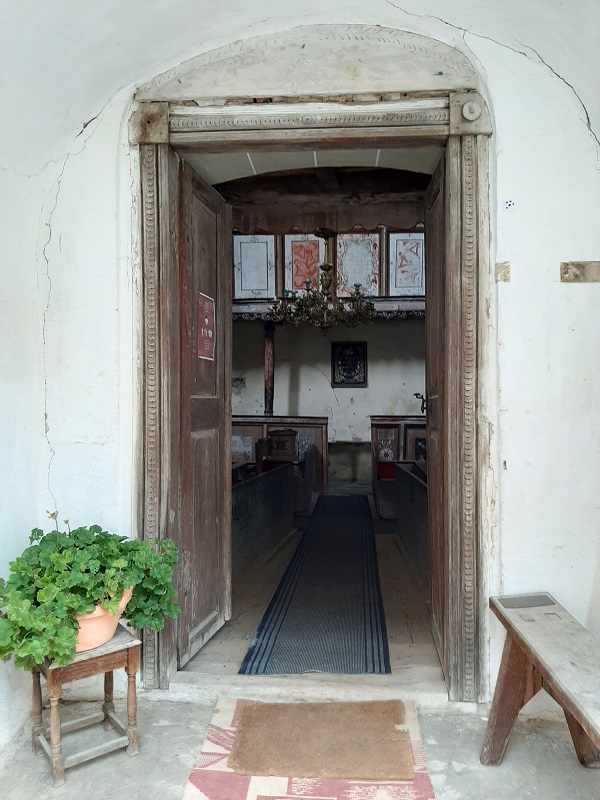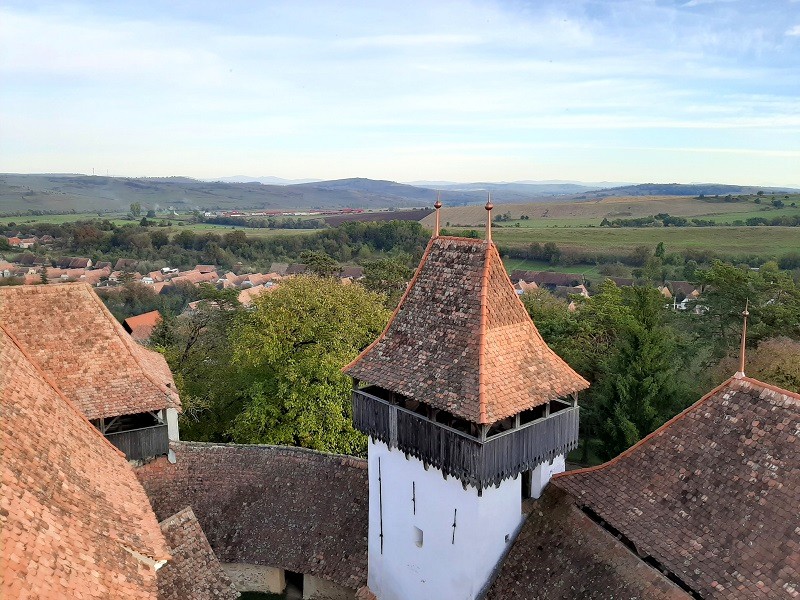A Visit to the Fortified Church of Viscri, Brasov County
In this destination guide, we visit the Saxon fortified church of Viscri (Deutsch-Weisskirch) in Brasov County, Romania.
A walk around Viscri
In the previous chapter of this trip report, I already detailed my experiences exploring the lovely village of Viscri.
Although the postcard-perfect village is well-worth a visit in its own right, Viscri does have one big, unmissable sight: Its magnificent Saxon fortified church.




Entering the fortified church
From Viscri’s main street it’s a short uphill walk on a cobblestoned street to reach the entrance to the fortified church.
Viscri’s fortified church is circled by a massive 7-metre high wall as well as a smaller outer ring wall.
You enter the church compound through the impressive gate tower on the southern side.
As the Saxon fortified church in Viscri is one of the best-known in Romania, it has a permanently staffed ticket booth so unlike the smaller churches across Transylvania you don’t have to call the caretaker to unlock the doors.
The entrance ticket for the fortified church costs 12 lei (€2.40).




Viscri fortified church history
To get a good impression of Viscri’s Saxon fortified church you should first make a walk along the circular wall inside the compound.
The German name of Viscri (Deutsch-Weisskirch) refers to a “white church” which originally stood here when the Saxon settlers arrived in the middle of the 12th century.
This white church – nothing more than a small chapel – was originally built by the built by the town’s Hungarian inhabitants
In the 13th century the German settlers integrated the small chapel into a larger Romanesque church which they built on the same site.
Between the 12th and early 16th century, the church was fortified in stages as walls, towers and bastions were added one by one.
An imposing keep was built in the middle of the fortified complex and the church was enlarged and connected to it.
However, some features have been removed from the fortifications as well over time after they became obsolete due to the advances in modern weaponry
During more peaceful times in the 18th century, the parapet walk and some of the battlements were replaced by storage houses and some of the defensive levels inside the church were removed.





Inside the church
Viscri’s fortified church follows a design which was typical for 12th and early 13th century German churches.
You will instantly notice the wooden galleries on either side of the church, as well as the simple wooden benches, which fortunately have some cushions and blankets on them to make it a bit more comfortable for the people sitting down.
The pipe organ behind the altar is a bit newer as this was built in 1817.
Originally, Viscri’s church was Roman Catholic but after the Protestant Reformation it became Lutheran.




Climbing up the tower
It is possible to climb up to the top of the keep – and this is something you should certainly do as it’s one of the highlights of the Viscri fortified church.
From the top of the keep you have an excellent view over the church fortifications as well as over the entire village of Viscri and the surrounding countryside.
When I arrived at the top, the sun was slowly setting over the hilly Transylvanian landscape, creating some stunning pastel colours in the skies.









Conclusion
The Saxon fortified church in Viscri is one of the better-known ones in Transylvania and well-worth a visit.
It’s a well-kept church and the ensemble of guard towers, fortifications and other structures is certainly beautiful.
The interior of the church is interesting as well due to authentic elements such as the wooden balustrades.
However, the highlight of the fortified church is its massive keep, from where you have fantastic views over the village of Viscri and the rolling hills of the Transylvanian countryside.
Trip report index
This article is part of the ‘Visiting the Saxon Fortified Churches of Transylvania‘ trip report, which consists of the following chapters:
1. The Fortified Church of Harman (Honigberg), Brasov County
2. The Fortified Church of Prejmer (Tartlau), Brasov County
3. The Fortified Church of Feldioara (Marienburg), Brasov County
4. A Visit to Rupea Fortress
5. The Fortified Church of Homorod (Hamruden), Brasov County
6. Racoș: Exploring an Extinct Volcano and Abandoned Castle
7. In the Footsteps of King Charles: A Visit to Viscri, Romania
8. A Visit to the Fortified Church of Viscri, Brasov County (current chapter)
9. A Night Walk Around the Citadel and Old Town of Sighisoara
10. Review: Hotel Casa Wagner, Sighisoara, Romania
11. The Fortified Church of Saschiz (Keisd), Mureș County
12. The Fortified Church of Cloasterf (Klosdorf), Mureș County
13. The Fortified Church of Mesendorf (Meschendorf), Brasov County
14. The Fortified Church of Crit (Deutsch-Kreuz), Brasov County
15. The Fortified Church of Biertan (Birthälm), Sibiu County
16. The Fortified Church of Hosman (Holzmengen), Sibiu County
17. Review: Brukenthal Palace Hotel, Avrig
18. A Visit to Sambata de Sus and the Brancoveanu Monastery
19. Into the Carpathians: A Beautiful Drive to Moieciu de Sus

